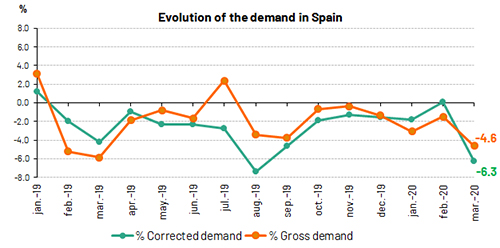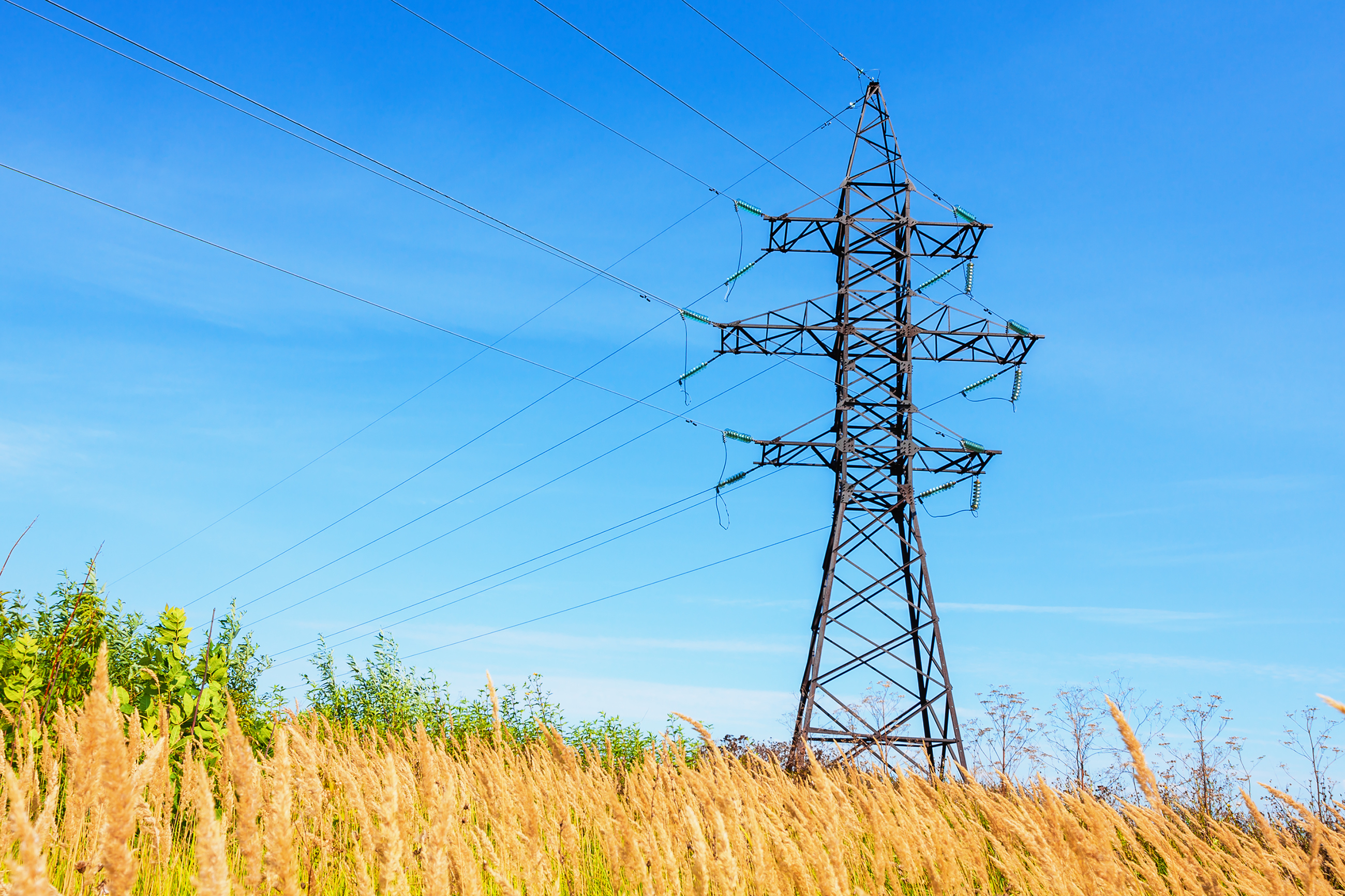For 40 years, we've been driving our country's economic and social progress. Four decades shaping Spain.
Demand for electrical energy in Spain falls 4.6% in March
- Half of the monthly generation came from renewable sources and 75.6% was produced from technologies that do not emit CO2 emissions.
- Compared to March 2019, the demand for electricity in the Balearic Islands fell 7.3% and decreased 8.9% in the Canary Islands.

In line with the monthly communication schedule regarding the evolution of the demand for electrical energy, Red Eléctrica de España publishes the data corresponding to the month of March; a month in which the state of alarm was declared due to the COVID-19 pandemic and that has had the consequent decrease in the country’s economic activity as of the 15th of March. In this context, national demand in March is estimated at 20,924 GWh, a value that is 4.6% lower than that registered in the same month last year. After having factored in the influence of seasonal and working patterns, the demand for electricity fell 6.3% compared to March 2019.

In the first quarter of 2020, demand is estimated at 65,695 GWh, 3.1% less than in the same quarter of 2019. Again, after having factored in the influence of seasonal and working, demand is 2.7% lower than in the same period last year.
In March, according to data estimated at the time of this press release, generation coming from renewable energy sources represented 50% of the total production. In the first quarter of 2019, overall renewable generation reached 44.7% of the total electricity generated.
75.6% of electricity generation during the month was obtained using technologies which produce zero CO2 emissions.
With information available as at the time of this press release, wind energy generation in March reached 5,640 GWh, a value 14.6% lower than in the same period last year, and this accounted for 26.8% of the total production nationwide.

Demand for electrical energy in the peninsular electricity system in the month of March is estimated at 19,812 GWh, 4.4% lower than that recorded in the same month last year. After having factored in the influence of seasonal and working patterns, the demand for electricity fell 6.1% with regard to 2019 figures.
In the first three months of 2020, the demand for electricity on the Spanish peninsula is estimated at 62,195 GWh, 3.1% less than in 2019. Once again, after having factored in the influence of seasonal and working patterns, demand is 2.7% lower than in the same period last year.
During this month, according to data estimated at the time of this press release, 51.7% of the peninsular generation came from renewable energy sources and 78.6% was obtained using technologies which produce zero CO2 emissions. Furthermore, wind energy stood at 5,543 GWh, a figure that is 14.9% higher than that registered in March last year and contributed 27.6% to the generation mix.
Demand for electricity decreased in the Balearic Islands and the Canary Islands in March
In the Balearic Islands, the demand for electricity in March is estimated at 405,010 MWh, a value that is 7.3% less than that registered in the same month last year. After having factored in the influence of seasonal and working patterns, the figure decreased by 7.6% with respect to March 2019. In the first quarter of 2020, demand in the Balearic Islands is estimated at 1,264,823 MWh, 4.9% less than in 2019.
Combined cycle, with 77.1% of the total, was the leading source of electricity generation in the Balearic Islands, where renewable technologies and those which produce cero CO2 emissions, accounted for 6.7% of the total generation. For the third month in a row, coal was not used to produce a single MWh in the Balearic Islands system.
Regarding the Canary Islands, demand for electricity is estimated at 672,832 MWh, 8,9% less than that registered in March 2019. After having factored in the influence of seasonal and working patterns, the figure dropped by 9.4% with respect to the same month last year. So far in 2020, demand in the Canary Islands is estimated at 2,134,193 MWh, an fell 1.8% compared to the same period last year.
During March and according to estimated data, combined cycle was the leading technology in the Canary Islands’ generation mix, with a contribution of 45.3%. Renewables and CO2 free technologies accounted for 16.4% of the generation on the Canary Islands.
Consult our Daily Balance Report for more information on the National, Peninsular, Balearic Islands and Canary Islands electricity systems as at the close of February.












